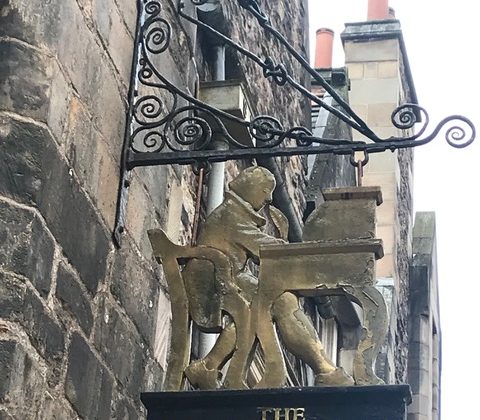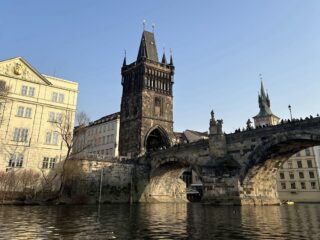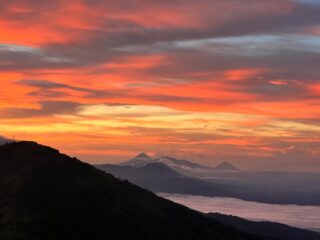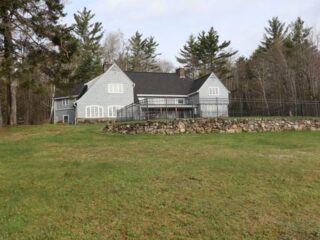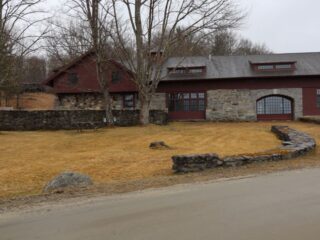By Tejas Yadav
The 25€ entry ticket (with audio-guide) was a strong deterrent — that’s more than you would pay to enter the Louvre museum. Pervasive hype was another; I am easily wary of popular trends. The religiosity would be inevitable. Finally, the unapologetic, unachieved state was at odds with my need for perfectionism, for completion. With these and other unformed doubts, and a tingle of excitement, I emerged at the metro station “Sagrada Familia” in Barcelona. It was my first day on my first ever trip to the Catalan capital in October 2019.
All my trepidation would melt away, replaced by awe at the end of the hour-long visit of Gaudi’s wondrous, quirky temple. At first glance, all I could see was a towering termite-hill, huge towers and their cavities–earthy, coloured as wet sand from a sultry Spanish beach. Surrounding shops, residential buildings and city life pressed upon the rising structure. With no prelude, the majesty of architecture needed no square, parvis or extensive clearing. Like a lotus sprung from the earth, made of that very terra firma, the Sagrada Familia sat snug in the palm of a city crossing.
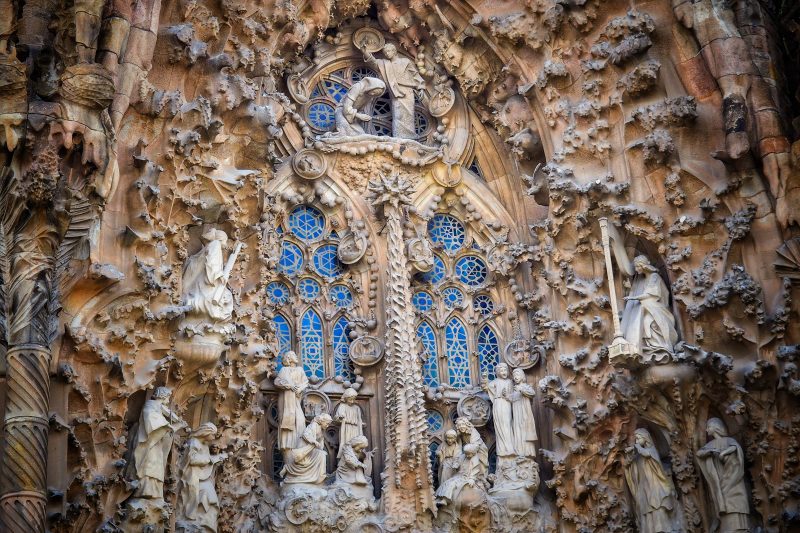
As I approached the Nativity facade, the grotesque transmogrified into the rapturous. Nature danced everywhere in defiance, flitting in and out of biblical sculptures like forest spirits frozen by the hand of man. Stone morphed into a profusion of leaves, flowers, birds, animals, symbols and human figures. Looking up I saw a burst of colour: a green tree of life, a cypress bearing down on the living, milling mass. This portal had a certain roughness, an unabashed alacrity. It challenged all sense of conventional aesthetic, yet everything was in abundant harmony. The audio guide said it was the only completed facade that Gaudi saw in his lifetime.
Entering the main church, my eyes were bedazzled by the light of a thousand windows. Gaudi had brought the forest into the city, into his temple, and flooded it with nature’s shade and luminosity. Pillars of stone shot up like tree branches supporting a canopy of serrated alcoves.
I was astonished at the lack of traditional motifs, paintings and idols. Beguiled, I’d stepped into a fantastical place, of magic and adventure. Stars glowed on the roof above Christ. A dark brooding figure, one of the few sculptures inside, sat ominous at the other end of the nave.
Balconies rippled in quintessential Gaudi-style on either side of the transept, like stone rivers suspended in enchanted planes of the forest. Behind the illuminated altar, the crypt where Gaudi lays could be through portholes, like a ship sunk into the earth. The tall stained-glass windows looked at once childish, amateur and also masterfully crafted to invite the dawn and dusk within. High above, oblong windows, alternating with absurdist symbolism, drew my eyes into a lofty ascent. The playful forest rose toward the heavens, dwarfing me in the unprecedented vision of genius.
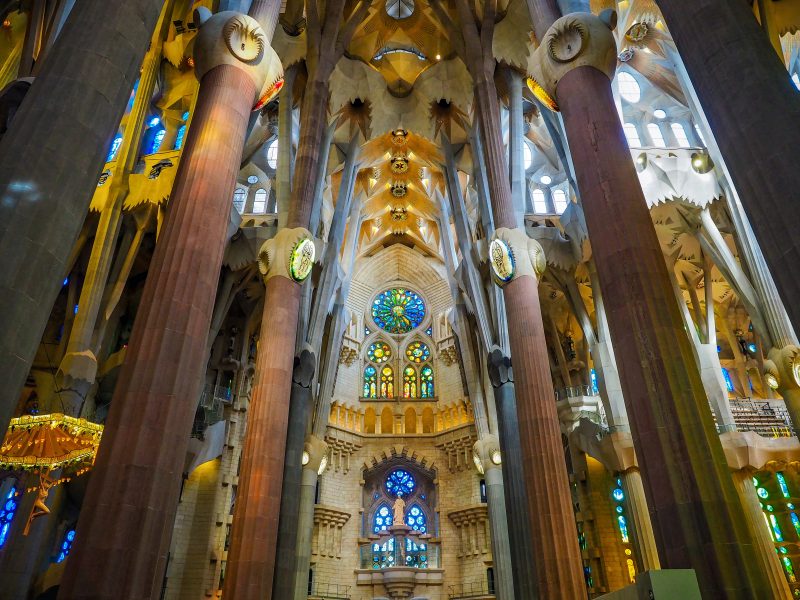
Coming out on the Passion facade, another surprise shocked my sensibilities. Here too, symmetry and harmony were not sacred, not in the way one expects. This portal was austere, menacing. Above wooden double-doors, a severe melancholy cried out in the silence of warrior-like sculptures.The beams supporting the muddy towers on this side were gaunt and steely, cold like the ribs of a dead whale. On either side, the cloisters were topped by fruit-laden, colourful spires — Nature’s bounty distilled into permanence.
The madness, the incoherence of styles flouted every rule of homogeneity and monotony. Gaudi exemplified diversity in his ostensible chaos, despite the underlying careful, mathematical dimensions. That irrational, surrealistic dream was telling me, once again, that ‘difference’ is a virtue. Normal, then, can not be the only ideal to aspire for. Walking away from that irreverent structure, I was inspired by the courage and imagination of Gaudi. His groundbreaking style created the plan for one of the most alternative, vibrant and exceptional churches in the world.
In a world that often mocks those who do not fit in, do not belong, I fell madly in love with an imperfect ant-hill, an incomplete forestland. More than anything, Sagrada Familia is a phantasmagoria, one that refuses to conform.
Tejas Yadav is a writer, scientist and amateur photographer. He enjoys a good coffee, traveling to new places and learning foreign languages. Currently, he lives in Paris, France.



